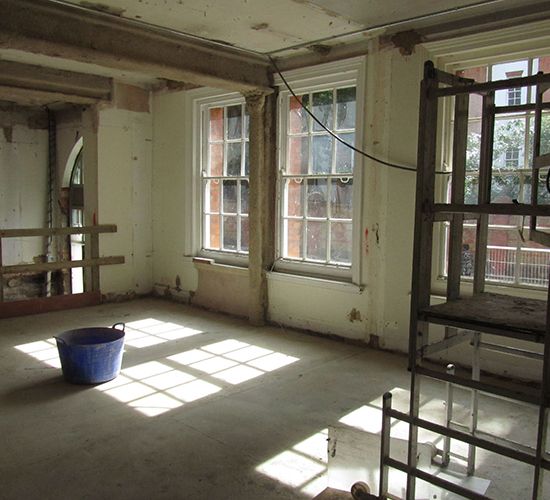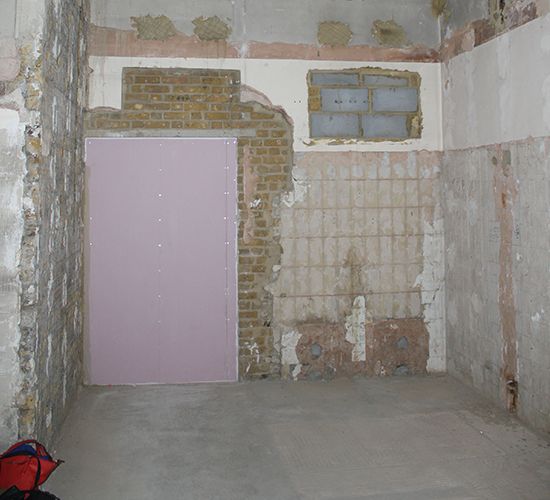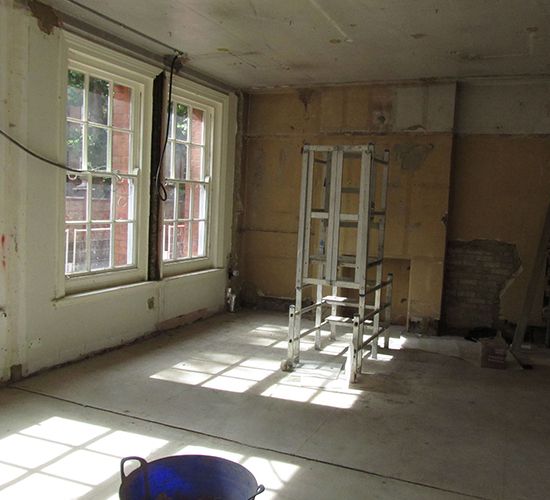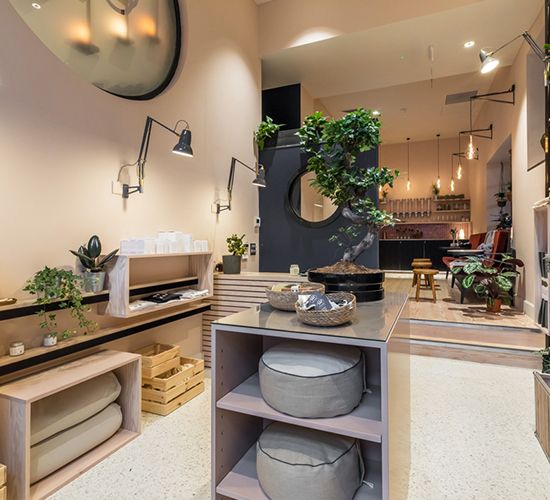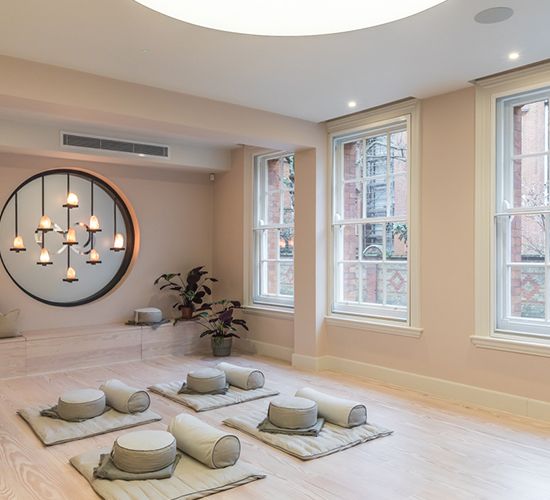With more than half the world’s population now living in cities, chronic illnesses are a growing issue. Globally, 76% of employees report a struggle with wellbeing1, and work-related stress costs the US approximately €255 billion and Europe €550 billion annually.2 With this in mind the WELL Building Standard™ (created by the International Well Building Institute (IWBI)) is working to prioritise health and wellbeing within the built environment.
Oliver Heath Design recently collaborated with Interface to write a guide to ‘Creating +Positive spaces using the WELL Building Standard’ – the guide will give you a good idea of what WELL is, why it’s relevant and the process of certification.
In this article we explore the process (and problems) of incorporating the WELL Standard into projects without going through certification and the inherent value of following WELL throughout the design and build process. This is particularly important as the emerging standard is still growing in awareness, meaning that the cost of accreditation itself is often seen as outweighing the benefits.
Re:Mind Studio – London
In 2017 Oliver Heath Design was approached with a request to design the Re:Mind Meditation Studio and immersive retail experience in central London. The brief: to create a space that promotes physical and especially psychological wellbeing through mindful design. Initially, plans were developed for the spaces that were rich in biophilic design to enhance a connection with nature – through materiality, planting, high levels of natural light etc. Even brief exposure to nature and natural stimuli has been shown to have positive effects on a person’s heart rate, blood pressure and sympathetic nervous system.3
However, exploring the WELL Building Standard, it was clear that biophilic design is only one part of the puzzle. The standard’s 7 concepts – air, water, nourishment, light, fitness, comfort, and mind – outline a whole series of design and construction decisions that can help to create truly healthy spaces. It was obvious that the WELL Standard should be incorporated in principle throughout the project, despite the higher cost implications and the fact that formal accreditation was not possible.
Our Journey with WELL
Step 1 – Appointment of Mechanical and Engineering Consultants (and leaders in the design of the WELL Building Standard).
Mechanical and engineering consultants (M+E for short) played a key role in advising on the application of WELL guidelines – the standard is extensive, and having an experienced user on board was helpful.
They were able to outline how several of the WELL concepts would be influential within Re:Mind:
- Air (low or zero VOC materials, coatings and treatments/ ventilation systems with filters to clean the poor quality London air)
- Water (incorporation of filter systems to remove contaminants)
- Light (high levels of natural lighting and suitable light levels throughout)
- Comfort (both acoustic and thermal)
- Mind (biophilic and mindful design)
Step 2 – Health and wellbeing review and the development of M+E designs
As designs developed and materials, paints and finishes began to be selected, a materials matrix was created that allowed each material’s VOC and formaldehyde levels, durability, inherent carbon etc. to be assessed alongside alternative choices. This allowed product selection to be tailored – ensuring better air quality and reduced environmental impact.
Mechanical and ventilation designs themselves were also created with WELL guidelines in mind. Air quality, thermal comfort and acoustics were all considered. With low levels of CO2 and pollutants and increased ventilation, leading to an 8-11% improvement in productivity, it was felt that a system of filters should be incorporated into any air conditioning units to improve air quality.
Step 3 – Pricing by Contractors
At this point collaboration between engineers, designers and contractors was necessary to give the clients as much information as possible regarding the costs of all designs. Expert consultants were contacted for information regarding lighting, acoustics, ventilation and heating as well as green walls.
Step 4 – Implementation
This stage required further collaboration between expert contractors to install all the required equipment within the studio.
What we found tricky!
First and foremost; WELL requires room! All the equipment for heating and ventilation systems, heat recovery technology and filtration systems was very bulky, and all the pipework for those systems was big too! We found that a lot of thought had to go into the positioning of equipment and the adapting of designs to ensure that equipment seemed unobtrusive. Not only is the equipment large, but it’s also expensive. While heat recovery systems are hugely efficient and will save you money over time, all the equipment requires investment.
Knowing the right questions to ask has also been problematic throughout the WELL process. While expert advice was always at hand, identifying and articulating queries preemptively (to save time) was extremely difficult.
Location vs. expectation was another point to consider. With WELL in mind, everyone involved with a project will have the highest aspirations for water quality, air quality and everything else. However, in a location such as central London, issues with water pressure, planning permission for extraction vents and unpredictable public activities (we had the joy of discovering that the area next to the intake vents was a favourite haunt of the local smoking community) all cause issues. Several water filtration systems require a minimum water pressure which is worth checking in the local area before specifying.
What we thought was great!
Throughout the project, WELL became a strong point of focus, helping the team and clients to hone a vision for the space. The ethos of WELL in promoting healthy behavior through design married very well to the brief of the meditation space, and the level of detail integrated into the WELL standard helped to inform material and design decisions throughout.
The end result has been enormously successful. Combining key stakeholders in the conversation including clients, design team, quantity surveyors, M&E, and contractors has ensured a consistency in vision and build quality, while the aesthetic approach demonstrates that ‘healthy’ can also be calming, aspirational and beautiful.
References
1https://www.globalwellnessinstitute.org/global-wellnessinstitute-releases-report-and-survey-on-the-future-of-wellnessat-work
2http://www.globalwellnesssummit.com/images/stories/gwi/ GWI_2016_Future_of_Wellness_at_Work.pdf
3Li, Q. (2010). Effect of Forest Bathing Trips on Human Immune Function. Environmental Health and Preventive Medicine, 15 (1), 9-17.
Kahn, Jr. P.H., B. Friedman, B. Gill, J. Hagman, R.L. Severson, N.G. Freier, E.N. Feldman, S. Carrere, & A. Stolyar (2008). A Plasma Display Window? The Shifting Baseline Problem in a Technology Mediated Natural World. Journal of Environmental Psychology, 28 (1), 192-199
Ulrich, R. S., Simons, R., Losito, B. D., Fiorito, E., Miles, M. A., & Zelson, M. (1991). Stress recovery during exposure to natural and urban environments. Journal of Environmental Psychology, 11, 201–230.
